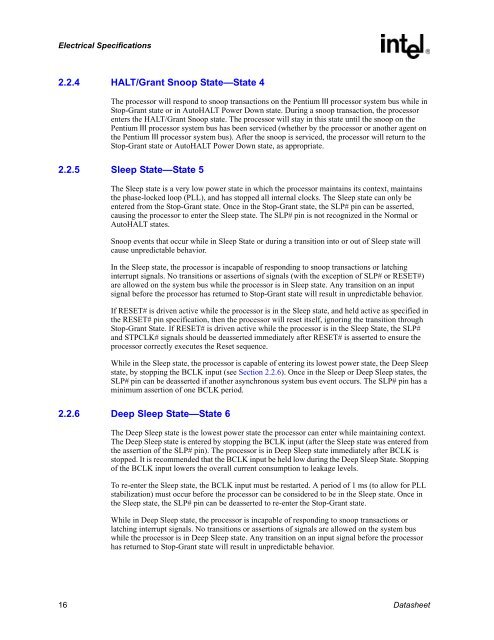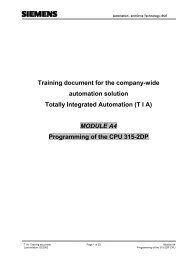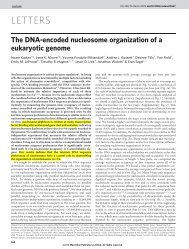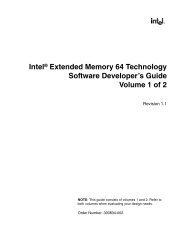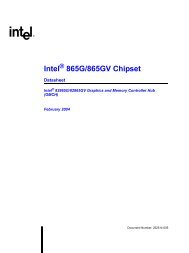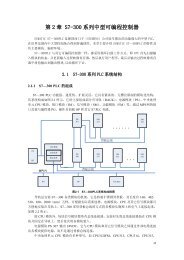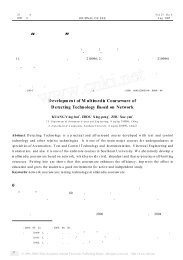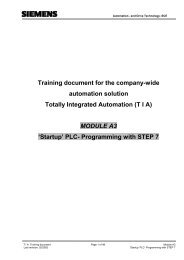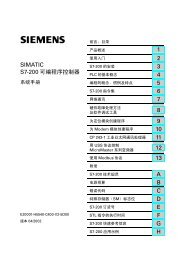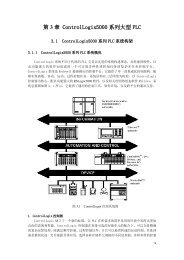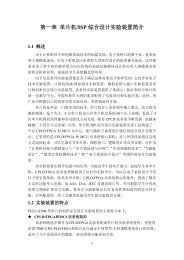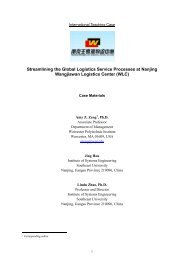Intel Pentium III Processor for the SC242 at 450 MHz to 1.0 GHz
Intel Pentium III Processor for the SC242 at 450 MHz to 1.0 GHz
Intel Pentium III Processor for the SC242 at 450 MHz to 1.0 GHz
You also want an ePaper? Increase the reach of your titles
YUMPU automatically turns print PDFs into web optimized ePapers that Google loves.
Electrical Specific<strong>at</strong>ions2.2.4 HALT/Grant Snoop St<strong>at</strong>e—St<strong>at</strong>e 4The processor will respond <strong>to</strong> snoop transactions on <strong>the</strong> <strong>Pentium</strong> <strong>III</strong> processor system bus while inS<strong>to</strong>p-Grant st<strong>at</strong>e or in Au<strong>to</strong>HALT Power Down st<strong>at</strong>e. During a snoop transaction, <strong>the</strong> processorenters <strong>the</strong> HALT/Grant Snoop st<strong>at</strong>e. The processor will stay in this st<strong>at</strong>e until <strong>the</strong> snoop on <strong>the</strong><strong>Pentium</strong> <strong>III</strong> processor system bus has been serviced (whe<strong>the</strong>r by <strong>the</strong> processor or ano<strong>the</strong>r agent on<strong>the</strong> <strong>Pentium</strong> <strong>III</strong> processor system bus). After <strong>the</strong> snoop is serviced, <strong>the</strong> processor will return <strong>to</strong> <strong>the</strong>S<strong>to</strong>p-Grant st<strong>at</strong>e or Au<strong>to</strong>HALT Power Down st<strong>at</strong>e, as appropri<strong>at</strong>e.2.2.5 Sleep St<strong>at</strong>e—St<strong>at</strong>e 5The Sleep st<strong>at</strong>e is a very low power st<strong>at</strong>e in which <strong>the</strong> processor maintains its context, maintains<strong>the</strong> phase-locked loop (PLL), and has s<strong>to</strong>pped all internal clocks. The Sleep st<strong>at</strong>e can only beentered from <strong>the</strong> S<strong>to</strong>p-Grant st<strong>at</strong>e. Once in <strong>the</strong> S<strong>to</strong>p-Grant st<strong>at</strong>e, <strong>the</strong> SLP# pin can be asserted,causing <strong>the</strong> processor <strong>to</strong> enter <strong>the</strong> Sleep st<strong>at</strong>e. The SLP# pin is not recognized in <strong>the</strong> Normal orAu<strong>to</strong>HALT st<strong>at</strong>es.Snoop events th<strong>at</strong> occur while in Sleep St<strong>at</strong>e or during a transition in<strong>to</strong> or out of Sleep st<strong>at</strong>e willcause unpredictable behavior.In <strong>the</strong> Sleep st<strong>at</strong>e, <strong>the</strong> processor is incapable of responding <strong>to</strong> snoop transactions or l<strong>at</strong>chinginterrupt signals. No transitions or assertions of signals (with <strong>the</strong> exception of SLP# or RESET#)are allowed on <strong>the</strong> system bus while <strong>the</strong> processor is in Sleep st<strong>at</strong>e. Any transition on an inputsignal be<strong>for</strong>e <strong>the</strong> processor has returned <strong>to</strong> S<strong>to</strong>p-Grant st<strong>at</strong>e will result in unpredictable behavior.If RESET# is driven active while <strong>the</strong> processor is in <strong>the</strong> Sleep st<strong>at</strong>e, and held active as specified in<strong>the</strong> RESET# pin specific<strong>at</strong>ion, <strong>the</strong>n <strong>the</strong> processor will reset itself, ignoring <strong>the</strong> transition throughS<strong>to</strong>p-Grant St<strong>at</strong>e. If RESET# is driven active while <strong>the</strong> processor is in <strong>the</strong> Sleep St<strong>at</strong>e, <strong>the</strong> SLP#and STPCLK# signals should be deasserted immedi<strong>at</strong>ely after RESET# is asserted <strong>to</strong> ensure <strong>the</strong>processor correctly executes <strong>the</strong> Reset sequence.While in <strong>the</strong> Sleep st<strong>at</strong>e, <strong>the</strong> processor is capable of entering its lowest power st<strong>at</strong>e, <strong>the</strong> Deep Sleepst<strong>at</strong>e, by s<strong>to</strong>pping <strong>the</strong> BCLK input (see Section 2.2.6). Once in <strong>the</strong> Sleep or Deep Sleep st<strong>at</strong>es, <strong>the</strong>SLP# pin can be deasserted if ano<strong>the</strong>r asynchronous system bus event occurs. The SLP# pin has aminimum assertion of one BCLK period.2.2.6 Deep Sleep St<strong>at</strong>e—St<strong>at</strong>e 6The Deep Sleep st<strong>at</strong>e is <strong>the</strong> lowest power st<strong>at</strong>e <strong>the</strong> processor can enter while maintaining context.The Deep Sleep st<strong>at</strong>e is entered by s<strong>to</strong>pping <strong>the</strong> BCLK input (after <strong>the</strong> Sleep st<strong>at</strong>e was entered from<strong>the</strong> assertion of <strong>the</strong> SLP# pin). The processor is in Deep Sleep st<strong>at</strong>e immedi<strong>at</strong>ely after BCLK iss<strong>to</strong>pped. It is recommended th<strong>at</strong> <strong>the</strong> BCLK input be held low during <strong>the</strong> Deep Sleep St<strong>at</strong>e. S<strong>to</strong>ppingof <strong>the</strong> BCLK input lowers <strong>the</strong> overall current consumption <strong>to</strong> leakage levels.To re-enter <strong>the</strong> Sleep st<strong>at</strong>e, <strong>the</strong> BCLK input must be restarted. A period of 1 ms (<strong>to</strong> allow <strong>for</strong> PLLstabiliz<strong>at</strong>ion) must occur be<strong>for</strong>e <strong>the</strong> processor can be considered <strong>to</strong> be in <strong>the</strong> Sleep st<strong>at</strong>e. Once in<strong>the</strong> Sleep st<strong>at</strong>e, <strong>the</strong> SLP# pin can be deasserted <strong>to</strong> re-enter <strong>the</strong> S<strong>to</strong>p-Grant st<strong>at</strong>e.While in Deep Sleep st<strong>at</strong>e, <strong>the</strong> processor is incapable of responding <strong>to</strong> snoop transactions orl<strong>at</strong>ching interrupt signals. No transitions or assertions of signals are allowed on <strong>the</strong> system buswhile <strong>the</strong> processor is in Deep Sleep st<strong>at</strong>e. Any transition on an input signal be<strong>for</strong>e <strong>the</strong> processorhas returned <strong>to</strong> S<strong>to</strong>p-Grant st<strong>at</strong>e will result in unpredictable behavior.16 D<strong>at</strong>asheet


